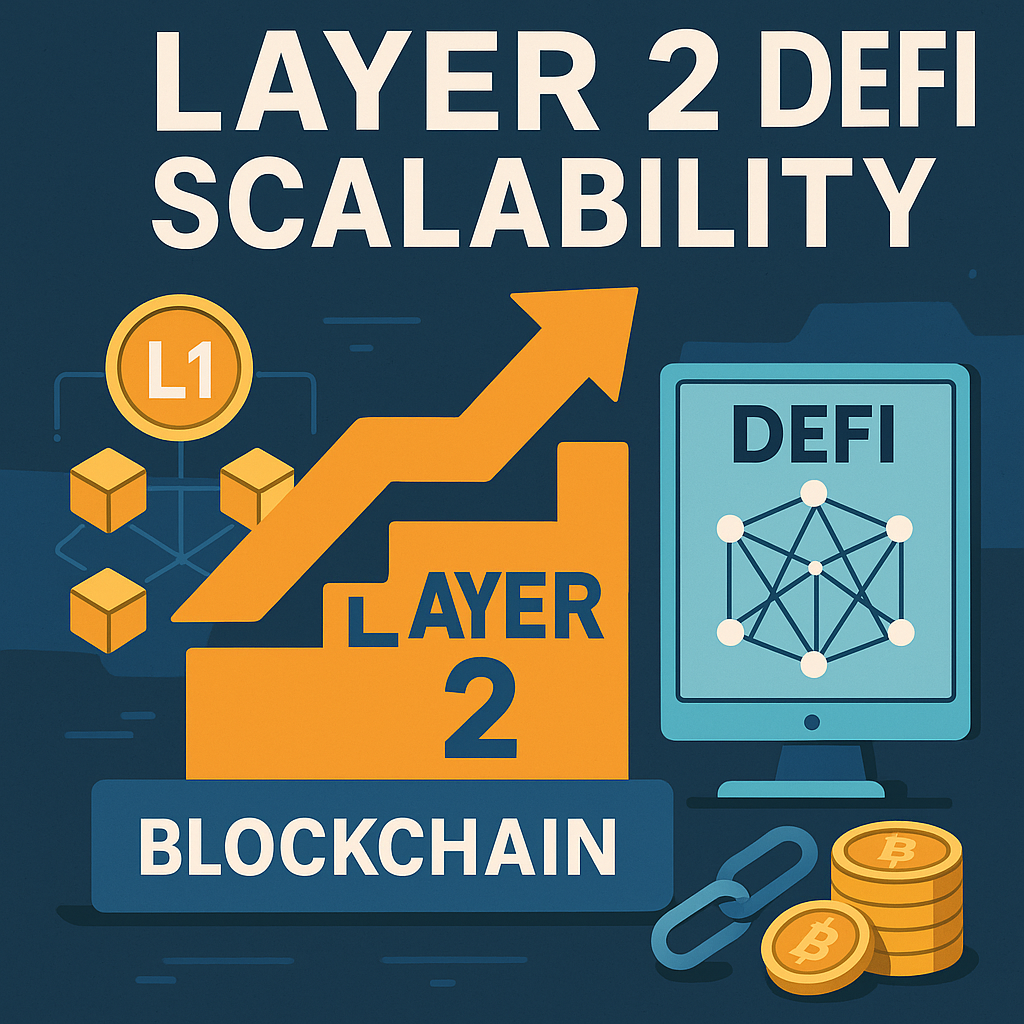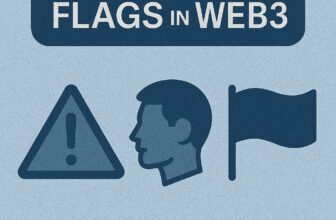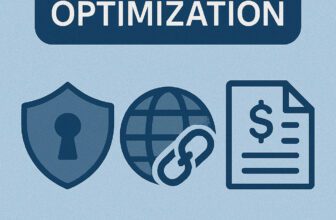Scaling DeFi with Layer 2s – Elevating Throughput and Efficiency
🌐 Lesson 4: Scaling DeFi with Layer 2s – Elevating Throughput and Efficiency
This lesson is part of the DeFi Pro Track and examines how Layer 2 DeFi scalability is transforming the performance and usability of decentralized finance. These innovations are designed to elevate throughput, reduce gas costs, and unlock new levels of accessibility and functionality across blockchain ecosystems.
It provides an in-depth understanding of various scaling techniques, their mechanisms, and the real-world implications they hold for users, developers, and the ecosystem at large.
🔍 Overview
The rapid growth of decentralized applications and DeFi protocols has outpaced the scalability of Ethereum and other base-layer blockchains. High gas fees, network congestion, and latency have created bottlenecks in user experience and protocol performance. Layer 2 solutions address these challenges by processing transactions off-chain or in parallel, while still leveraging the security of the main blockchain.
This lesson unpacks how L2 technologies like rollups, state channels, and sidechains are reshaping DeFi’s infrastructure. It highlights how scalability is not merely a performance issue, but a key enabler of adoption, affordability, and innovation.
 What You’ll Need to Know
What You’ll Need to Know
1.Prerequisites:
- Solid understanding of Layer 1 blockchains like Ethereum
- Familiarity with DeFi mechanics and smart contracts
- Completion of earlier lessons, especially on governance and derivatives
2.Target Audience:
- DeFi developers, power users, blockchain architects, and researchers
- Anyone seeking to reduce gas costs or design scalable dApps
- Users migrating to L2s or considering integration strategies
🎯 Learning Objectives
- Understand the limitations of Layer 1 blockchains and why scalability matters
- Learn about different Layer 2 scaling solutions and how they function
- Examine how rollups (ZK and Optimistic) improve transaction throughput
- Explore real-world L2 implementations in leading DeFi protocols
- Recognize the trade-offs between decentralization, security, and scalability
✍️ Content
🚧 The Scalability Problem in DeFi
Layer 1 blockchains like Ethereum are secure and decentralized, but they struggle with transaction throughput. When many users interact with DeFi protocols simultaneously, the network becomes congested. This congestion leads to slower transactions and high gas fees, making DeFi less accessible, particularly for small retail users.
As DeFi continues to grow, scalability becomes mission-critical. Without it, the promise of decentralized finance remains bottlenecked by infrastructure limitations.
The urgency of addressing Layer 2 DeFi scalability becomes evident as user demand continues to grow.
🛠️ Enter Layer 2 Solutions
Layer 2 refers to any protocol built on top of a Layer 1 blockchain that processes transactions separately but ultimately settles them back on the main chain. This structure enables high throughput and low fees without compromising base-layer security. Various L2 solutions are currently in use, each with different architectures and benefits.
One prominent approach is the rollup, where multiple transactions are bundled together and submitted to the main chain as a single transaction. Rollups come in two main forms: Optimistic Rollups and Zero-Knowledge (ZK) Rollups. Optimistic Rollups assume transactions are valid by default, while ZK Rollups use cryptographic proofs to ensure transaction integrity. Both methods reduce the data footprint on Layer 1 and drastically improve scalability.
Another method involves state channels, where users interact off-chain and only post the final state to the blockchain. While this offers instant and low-cost transactions, it is more suitable for smaller, closed networks.
Sidechains operate as independent blockchains pegged to the main chain. Although not technically Layer 2, they are often grouped in this category. Sidechains provide flexibility and scalability but rely on their own consensus mechanisms, which can differ in terms of security.
Among the most promising answers to the scalability dilemma is the focus on Layer 2 DeFi scalability, which redefines how decentralized protocols handle congestion and cost.
🌉 Real-World Applications in DeFi
Numerous DeFi platforms have begun integrating Layer 2 solutions to improve performance and accessibility. For example, Arbitrum and Optimism, both leveraging Optimistic Rollups, host many protocols like Uniswap and Sushiswap with significantly reduced fees. Meanwhile, zkSync and StarkNet, based on ZK Rollups, are gaining traction for their speed and security guarantees.
Even stablecoin transactions, lending platforms, and NFT marketplaces are increasingly operating on Layer 2. These implementations mark a shift from experimental scaling to mainstream adoption.
⚖️ Trade-offs and Considerations
While Layer 2 solutions bring enormous benefits, they also introduce complexities. There are delays in withdrawals from Optimistic Rollups due to fraud-proof periods. ZK Rollups require advanced cryptography and may be harder to audit. Additionally, user experience is fragmented across L2 networks, requiring bridges and interface adaptations.
Security assumptions also vary. Although most L2s inherit the security of their base layer, their own operational or governance mechanisms can be points of vulnerability. Therefore, it’s crucial to evaluate each Layer 2 in terms of trust assumptions, decentralization, and upgradability.
🚀 The Road Ahead for Scalable DeFi
Scaling DeFi is not a one-size-fits-all endeavor. It requires a combination of Layer 2 innovations, Layer 1 improvements (like Ethereum’s danksharding), and cross-chain interoperability. What’s clear is that Layer 2 DeFi scalability is enabling a more inclusive and performant DeFi landscape. As tooling, developer adoption, and education improve, Layer 2 DeFi scalability may become a strategic priority and the default for DeFi usage.

✨ Key Elements
- Optimistic Rollups and ZK Rollups
- State Channels and Sidechains
- Ethereum scalability limitations
- Layer 2 adoption in major protocols
- Gas fees and transaction finality
 Related Terms:
Related Terms:
- Sequencer
- Fraud Proof
- Validity Proof
- Plasma Chains
- L2 Bridges
- Exit Period
- Composability
- Rollup-centric Roadmap
📌 Conclusion
Layer 2 technologies are more than technical upgrades—they are enablers of mass adoption and ecosystem growth. By addressing the scalability trilemma, Layer 2s empower DeFi to be faster, cheaper, and more accessible without compromising decentralization. Understanding these solutions is essential for anyone seeking to build or interact with the next generation of decentralized applications.
Featured Courses
Capstone: Simulated Web3 Journey
Managing Risks & Red Flags in Web3
Privacy & Transaction Optimization
Using Crypto in Daily Life
NFTs & Web3 Apps in Practice
Introduction to DeFi: Lending, Staking & Yield Explained
Understanding Block Explorers in Crypto
Bridges & Multi-Chain Navigation
Swapping Tokens & Using DEXs
🚀 Advance to the Next Stage
Curious about how assets move across chains and ecosystems? In the next lesson, we dive into Cross-Chain Liquidity and Interoperability to understand how DeFi protocols are breaking down silos and expanding their reach.
Start Lesson 5 – Cross-Chain Liquidity & InteroperabilityJoin the Crypto Hoopoe Community

 What You’ll Need to Know
What You’ll Need to Know Related Terms:
Related Terms:






